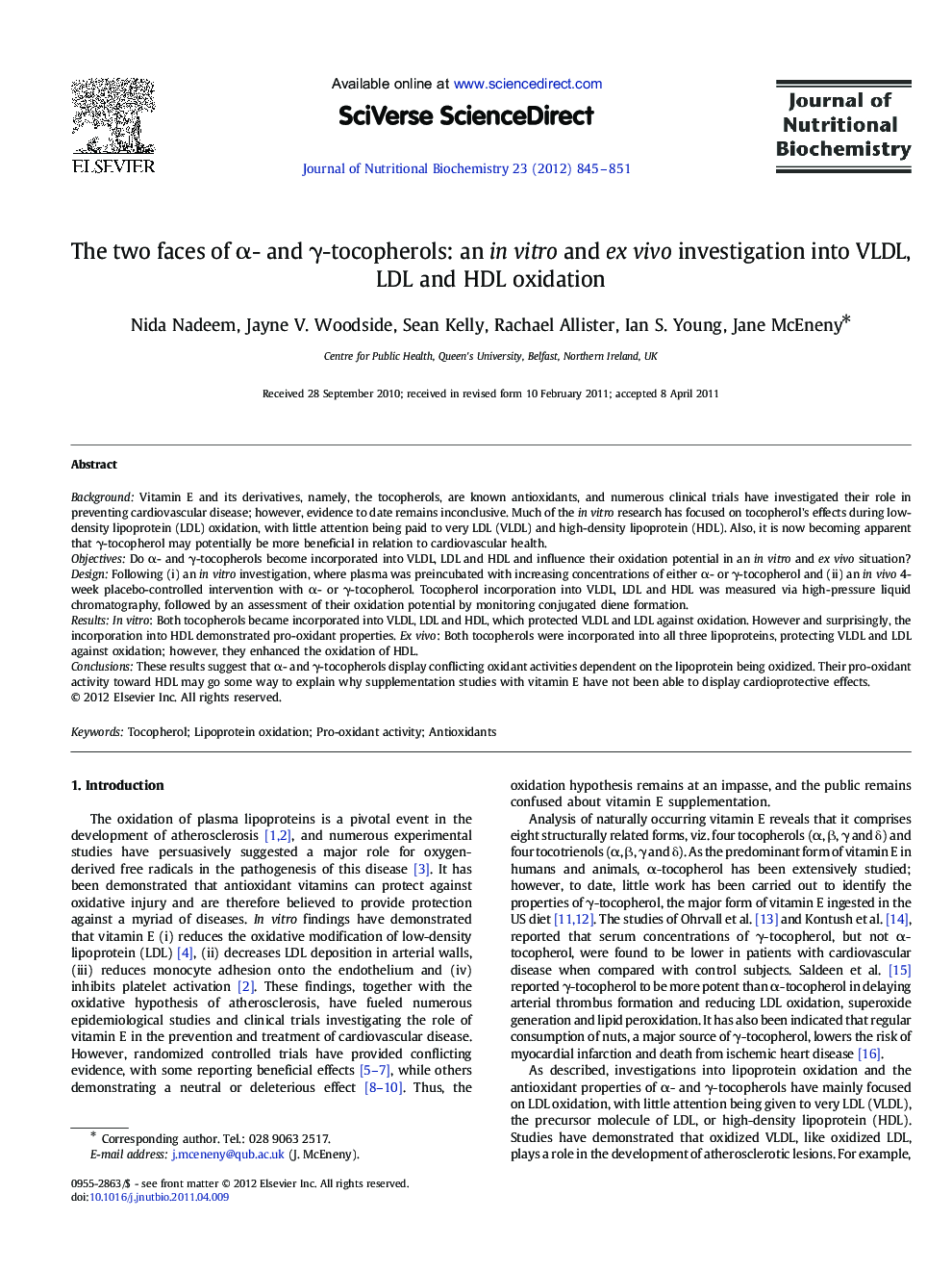| Article ID | Journal | Published Year | Pages | File Type |
|---|---|---|---|---|
| 1990335 | The Journal of Nutritional Biochemistry | 2012 | 7 Pages |
BackgroundVitamin E and its derivatives, namely, the tocopherols, are known antioxidants, and numerous clinical trials have investigated their role in preventing cardiovascular disease; however, evidence to date remains inconclusive. Much of the in vitro research has focused on tocopherol's effects during low-density lipoprotein (LDL) oxidation, with little attention being paid to very LDL (VLDL) and high-density lipoprotein (HDL). Also, it is now becoming apparent that γ-tocopherol may potentially be more beneficial in relation to cardiovascular health.ObjectivesDo α- and γ-tocopherols become incorporated into VLDL, LDL and HDL and influence their oxidation potential in an in vitro and ex vivo situation?DesignFollowing (i) an in vitro investigation, where plasma was preincubated with increasing concentrations of either α- or γ-tocopherol and (ii) an in vivo 4-week placebo-controlled intervention with α- or γ-tocopherol. Tocopherol incorporation into VLDL, LDL and HDL was measured via high-pressure liquid chromatography, followed by an assessment of their oxidation potential by monitoring conjugated diene formation.ResultsIn vitro: Both tocopherols became incorporated into VLDL, LDL and HDL, which protected VLDL and LDL against oxidation. However and surprisingly, the incorporation into HDL demonstrated pro-oxidant properties. Ex vivo: Both tocopherols were incorporated into all three lipoproteins, protecting VLDL and LDL against oxidation; however, they enhanced the oxidation of HDL.ConclusionsThese results suggest that α- and γ-tocopherols display conflicting oxidant activities dependent on the lipoprotein being oxidized. Their pro-oxidant activity toward HDL may go some way to explain why supplementation studies with vitamin E have not been able to display cardioprotective effects.
